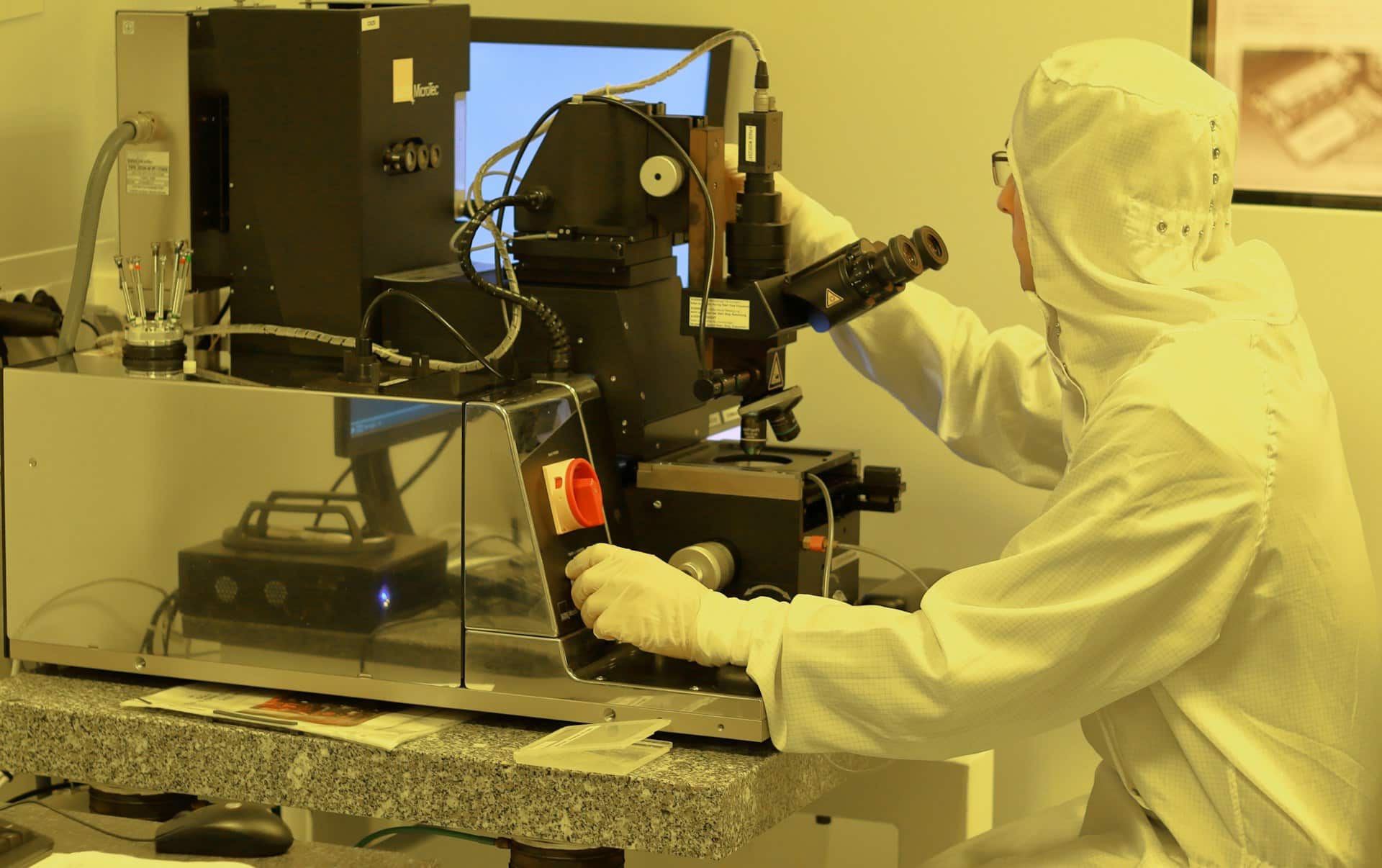The world of technology is constantly evolving, with new advancements bringing about significant changes across various industries. One such breakthrough is the emergence of nanotechnology, a sector that manipulates matter on the atomic and molecular scale to create innovative materials and devices. The potential of nanotechnology in consumer electronics is enormous, from increasing the efficiency of devices to revolutionizing the way we interact with technology.
Let’s delve into the applications, properties, and capabilities of nanotechnology and how the various industries are harnessing this technology to develop groundbreaking products.
Cela peut vous intéresser : How to leverage gamification to increase customer engagement?
Expanding Potential of Nanomaterials
The development of nanomaterials has shown remarkable promise in various industries, particularly in consumer electronics. Nanomaterials are significantly smaller than traditional materials, with a nanometer measuring one-billionth of a meter. Their small size gives them unique properties, such as increased strength, chemical reactivity, and light interaction.
Nanomaterials, including nanoparticles, are now being used to enhance the performance of electronic devices. For instance, you might be surprised to learn that the vibrant, high-resolution display on your television or smartphone is due to quantum dots, tiny semiconductor particles that emit light when energized. Thanks to their nanoscale size, these particles can emit light in a wide spectrum of colors, resulting in brighter, more vibrant displays.
Cela peut vous intéresser : How are drones changing the landscape of agricultural monitoring?
Revolutionizing Electronics with Nanodevices
The use of nanodevices is another promising development in the world of electronics. These devices, built using nanoscale components, offer enhanced performance and features compared to their larger counterparts. The exceptional precision of nanodevices allows for a high degree of control, making them ideal for applications in the electronics industry.
One example of a nanodevice is a transistor made from single-electron devices. These transistors, which control the flow of electricity in circuits, are significantly smaller and more energy-efficient than traditional transistors. This means that electronics manufacturers can pack more processing power into a smaller space, leading to the production of increasingly compact, highly efficient devices.
Nanotechnology in the Energy Industry
Nanotechnology’s potential extends far beyond consumer electronics. Its applications in the energy sector are equally promising, as it offers unique solutions for energy storage and generation.
One such application is in the development of nano-based solar panels. By incorporating nanoparticles into solar cells, manufacturers can improve their efficiency and reduce their cost. Nanoparticles can absorb more sunlight than traditional materials, converting it into electricity more efficiently. This could lead to the production of affordable, highly efficient solar panels, transforming the way we harness and use solar energy.
Nanotechnology in the Food Industry
Even the food industry hasn’t been left behind in harnessing the immense potential of nanotechnology. The development and application of nanomaterials in food production, packaging, and processing could revolutionize the way we process and consume food.
For instance, nano-structured food ingredients can improve the texture, taste, and nutritional value of food products. Nanoparticles can also be used in packaging materials to improve their barrier properties, making them more resistant to moisture, gases, and even microbes. Such innovations could lead to longer shelf lives for food products and potentially reduce food waste.
The Future of Nanotechnology
The potential of nanotechnology is seemingly endless. As research continues and our understanding of this technology deepens, we can expect to see even more groundbreaking applications in consumer electronics and other industries.
For instance, scientists are exploring the use of nanoparticles to develop ultra-thin, flexible electronic devices. Imagine a smartphone that you can fold like a piece of paper, or a television that you can roll up and carry in your backpack. Such advancements may sound like science fiction today, but with the power of nanotechnology, they could soon become a reality.
So, as we keep advancing, expect to see more innovative, nanotechnology-based products hitting the market. And remember, all this is thanks to the wonders of manipulating matter on the nanoscale.
Remember, it’s not just the electronics industry that stands to benefit. From energy to food production, nanotechnology will undoubtedly continue to reshape our world in ways we can’t even imagine yet. It’s an exciting time to be alive, indeed.
Manufacturing Possibilities with Carbon Nanotubes
Among the many advancements in nanotechnology, carbon nanotubes remain one of the most exciting. Carbon nanotubes are cylindrical molecules consisting of a single layer of carbon atoms. These minuscule structures with their extraordinary mechanical, electrical, and thermal properties are a game-changer for consumer electronics.
Carbon nanotubes have a high aspect ratio, meaning they’re long and thin and can conduct electricity better than copper. This makes them perfect for use in electrical devices like transistors, sensors, and even batteries. Their exceptional thermal conductivity, five times that of copper, offers potential applications in thermal management, like cooling systems for electronics.
Additionally, carbon nanotubes offer exciting prospects for flexible electronics. By incorporating these into electronic devices, manufacturers can create flexible, lightweight, and highly durable products. Imagine a tablet that can fold into a phone, or a wearable device that perfectly molds to your wrist.
Furthermore, carbon nanotubes have demonstrated promising results in the field of energy storage. Their high surface area allows them to store more energy, leading to the development of more efficient batteries and supercapacitors. Moving forward, we could see batteries that not only last longer but are also significantly smaller and lighter.
Nanotechnology and Drug Delivery
Nanotechnology is not just transforming electronic devices or energy efficiency. It’s also bringing significant changes to the biomedical field. One of the exciting applications of nanotechnology is in drug delivery systems.
Nanotechnology enabled drug delivery systems can deliver drugs to specific cells in the body, increasing the effectiveness of the treatment and reducing harmful side effects. For example, nanoparticles like quantum dots and titanium dioxide can be used to deliver cancer drugs directly to tumor cells, sparing healthy cells and reducing the side effects associated with traditional chemotherapy.
Moreover, nanotechnology can be used to create responsive drug delivery systems. These systems can respond to specific stimuli in the body, such as changes in pH level, temperature, or the presence of specific molecules, to release their drug payload. This could be revolutionary in treating diseases that require precise, controlled medication delivery.
Looking Ahead: Nanotechnology’s Bright Future
There’s no doubt that nanotechnology is a game-changing science that will shape the future of consumer electronics and many other industries. Its potential for creating more efficient, smaller, and flexible electronic devices is exceptional. As scientists and engineers continue to explore the boundaries of this technology, we can anticipate groundbreaking innovations on the horizon.
The development of carbon nanotubes and their incorporation into electrical devices are expected to revolutionize the electronics industry, leading to products that are lighter, flexible, and more energy-efficient. In the biomedical field, applications of nanotechnology in drug delivery systems promise a more targeted and effective treatment, drastically improving patient care.
Meanwhile, the energy sector is exploring the potential of nanotechnology for improving energy storage and generation. The inclusion of nanoparticles in solar panels is expected to make solar energy more efficient and affordable.
In the food industry, nanomaterials offer potential improvements in food processing, packaging, and even the nutritional value of the food itself. This could lead to longer-lasting, healthier food products, potentially addressing some of the world’s food security challenges.
As we move forward, it’s clear that the impact of nanotechnology will continue to be felt across various industries. It’s a fascinating and exciting time in the realm of science and technology. The potential of nanotechnology is vast and its future is bright.






